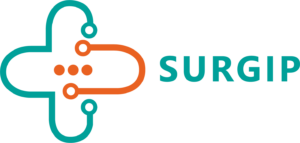In the evolving landscape of healthcare technology, predictive analytics stands out as a revolutionary tool, significantly altering how medical facilities manage their operations and patient care. Surgip, a leader in medical scheduling software, incorporates predictive analytics to enhance the efficiency and effectiveness of healthcare services. This article delves into the intricacies of Surgip’s predictive analytics feature, examining its components, benefits, and the profound impact it has on the healthcare industry.
What is Predictive Analytics?
Predictive analytics refers to the use of data, statistical algorithms, and machine learning techniques to identify the likelihood of future outcomes based on historical data. In healthcare, this means anticipating events such as patient no-shows or the need for particular medical services, which allows for better planning and resource allocation.
The Evolution of Predictive Analytics in Healthcare
Predictive analytics has not always been part of the healthcare industry. Its integration over the past decade has revolutionized many aspects of healthcare administration and patient engagement. By understanding patterns and outcomes, hospitals and clinics can now foresee patient behaviors and improve operational efficiency.
Understanding Surgip’s Predictive Analytics Feature
Surgip’s predictive analytics feature is designed to seamlessly integrate into existing hospital systems, providing a robust tool that supports medical staff in making informed decisions.
Key Components
- Data Collection: Surgip’s system gathers extensive data from various sources including patient histories, appointment records, and operational data from the hospitals themselves.
- Analysis and Interpretation: Using advanced algorithms, Surgip analyzes this data to forecast patient behaviors and identify potential issues in scheduling and resource allocation.
Benefits of Surgip’s Predictive Analytics
The integration of predictive analytics into Surgip’s software provides numerous benefits:
- Reducing No-Shows: By predicting which patients are likely to miss appointments, hospitals can take preemptive steps to remind patients or reschedule.
- Optimizing Surgical Schedules: Predictive analytics helps in planning the schedules of surgeries more efficiently, reducing waiting times and increasing patient satisfaction.
Overcoming Barriers
Successful implementation often requires strategic planning, investment in staff training, and choosing the right technological partners. Overcoming these barriers is crucial for hospitals aiming to enhance operational effectiveness through predictive analytics.
Future Prospects
The future of predictive analytics in healthcare looks promising. With advancements in AI and machine learning, these tools will become even more precise and integral to healthcare management.
Conclusion
Surgip’s predictive analytics feature represents a significant step forward in the management of healthcare operations. By effectively predicting patient behaviors and optimizing resource allocation, it not only enhances
FAQs
- What exactly is predictive analytics in the context of healthcare?
- Predictive analytics in healthcare uses historical data, statistical algorithms, and machine learning to forecast future events, such as patient behaviors and resource needs, improving scheduling accuracy and operational efficiency.
- How does Surgip’s predictive analytics feature help reduce no-shows?
- Surgip’s system analyzes patterns in patient behavior and identifies those likely to miss appointments, allowing healthcare providers to proactively engage with these patients through reminders or rescheduling, thus reducing no-show rates.
- Can Surgip’s predictive analytics interface with existing hospital systems?
- Yes, Surgip’s predictive analytics feature is designed to integrate seamlessly with existing hospital management systems, enhancing their capabilities without requiring extensive modifications.
- What does the future hold for predictive analytics in healthcare?
The future is promising, with advancements in AI and machine learning expected to enhance the accuracy and efficiency of predictive analytics. This will lead to more personalized patient care, streamlined operations, and overall improved healthcare management systems.

